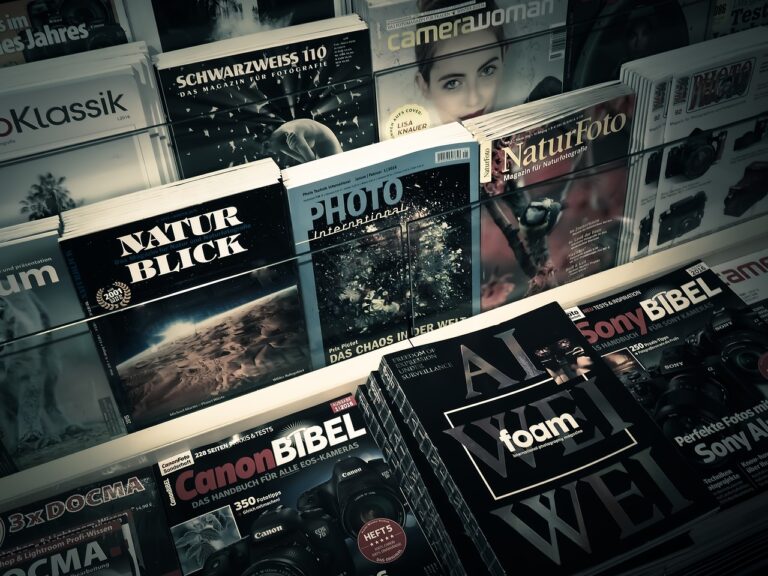Addressing Diversity and Inclusion in Media Representation: 99exch, Laser247 club, World777 contact number
99exch, laser247 club, world777 contact number: In today’s modern society, diversity and inclusion are hot topics that are at the forefront of many conversations. This is especially true when it comes to media representation. The media plays a critical role in shaping our perceptions and beliefs about the world around us, so it’s essential that it accurately reflects the diversity of our society. By ensuring that all people are represented in a fair and accurate way, we can create a more inclusive and equitable world for everyone.
It’s no secret that the media has historically struggled with diversity and inclusion. For far too long, certain groups have been underrepresented or misrepresented in film, television, advertising, and other forms of media. This lack of representation can have real-world consequences, perpetuating stereotypes, and reinforcing biases. But the good news is that progress is being made, with more and more voices being heard and diverse stories being told.
So how can we address diversity and inclusion in media representation? Here are some key strategies to consider:
1. Authentic Representation
One of the most important ways to address diversity and inclusion in media representation is by ensuring that diverse characters and storylines are portrayed authentically. This means hiring diverse writers, directors, and actors who can bring their own lived experiences to the table. By telling stories that are true to the diverse range of human experiences, we can create more nuanced and realistic portrayals of different groups.
2. Intersectionality
Intersectionality refers to the complex ways in which different aspects of a person’s identity (such as race, gender, sexuality, and class) intersect and interact with each other. When creating media representations, it’s important to consider the intersectionality of characters and stories. This means recognizing that people are not defined by a single aspect of their identity, but by a combination of factors that shape their experiences and perspectives.
3. Diverse Storytelling
In addition to including diverse characters, it’s important to tell a wide range of stories that reflect the complexity of human experiences. This means moving beyond stereotypes and cliches to showcase the rich tapestry of diversity that exists in our society. By exploring different cultures, backgrounds, and perspectives, we can challenge our assumptions and broaden our understanding of the world.
4. Hiring Practices
One of the most effective ways to promote diversity and inclusion in media representation is by ensuring that diverse voices are heard behind the scenes. This means hiring a diverse workforce of writers, directors, producers, and other creatives who can bring unique perspectives to the table. By creating a more inclusive work environment, we can foster creativity and innovation that can lead to more diverse and authentic media representations.
5. Training and Education
Education and training are key components of creating a more inclusive media landscape. By providing workshops, seminars, and other opportunities for learning, we can help media professionals understand the importance of diversity and inclusion and equip them with the tools they need to create more inclusive content. This can involve everything from unconscious bias training to cultural competency workshops.
6. Representation Matters
At the end of the day, representation matters. When people see themselves reflected in the media they consume, it can have a profound impact on their sense of belonging and self-worth. By creating media representations that are diverse, inclusive, and authentic, we can send a powerful message that everyone’s stories are valuable and worth telling.
In conclusion, addressing diversity and inclusion in media representation is a complex and ongoing process. It requires a commitment from creators, consumers, and industry professionals to challenge biases, break down barriers, and create a more equitable media landscape. By working together to promote authentic representation, intersectionality, diverse storytelling, hiring practices, training and education, and the understanding that representation matters, we can create a more inclusive and equitable world for all.
**FAQs**
Q: Why is diversity and inclusion important in media representation?
A: Diversity and inclusion are important in media representation because they help to create a more accurate and authentic reflection of our society. By ensuring that all people are represented in a fair and equitable way, we can challenge stereotypes, combat bias, and promote understanding and empathy.
Q: How can individuals support diversity and inclusion in media representation?
A: Individuals can support diversity and inclusion in media representation by consuming a wide range of diverse media, supporting diverse creators and storytellers, advocating for more inclusive media practices, and engaging in conversations about the importance of representation.
Q: What are some examples of diverse and inclusive media representations?
A: Some examples of diverse and inclusive media representations include shows like “Pose” that feature LGBTQ+ characters and storylines, movies like “Crazy Rich Asians” that highlight Asian culture and experiences, and advertising campaigns that feature people of all backgrounds and abilities.
Q: How can media companies promote diversity and inclusion in their content?
A: Media companies can promote diversity and inclusion in their content by implementing diverse hiring practices, conducting training and education programs, creating opportunities for diverse voices to be heard, and actively seeking out and promoting diverse stories and perspectives.
Q: What are some common myths or misconceptions about diversity and inclusion in media representation?
A: Some common myths or misconceptions about diversity and inclusion in media representation include the idea that diversity is merely about tokenism, that diverse content is not profitable, and that there is no need for change in the current media landscape. In reality, promoting diversity and inclusion benefits everyone and leads to more creative and innovative content.







